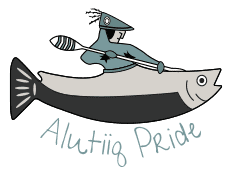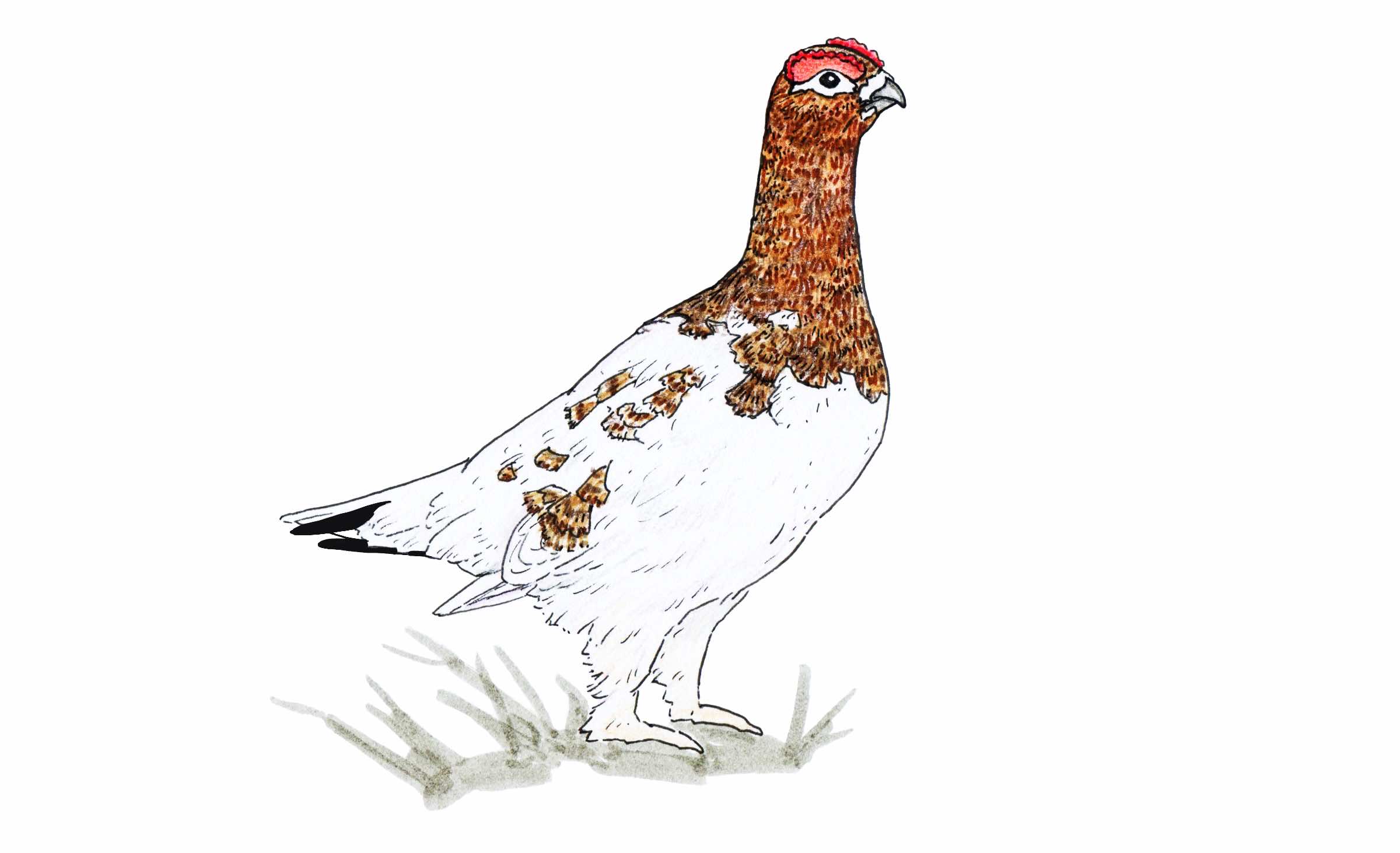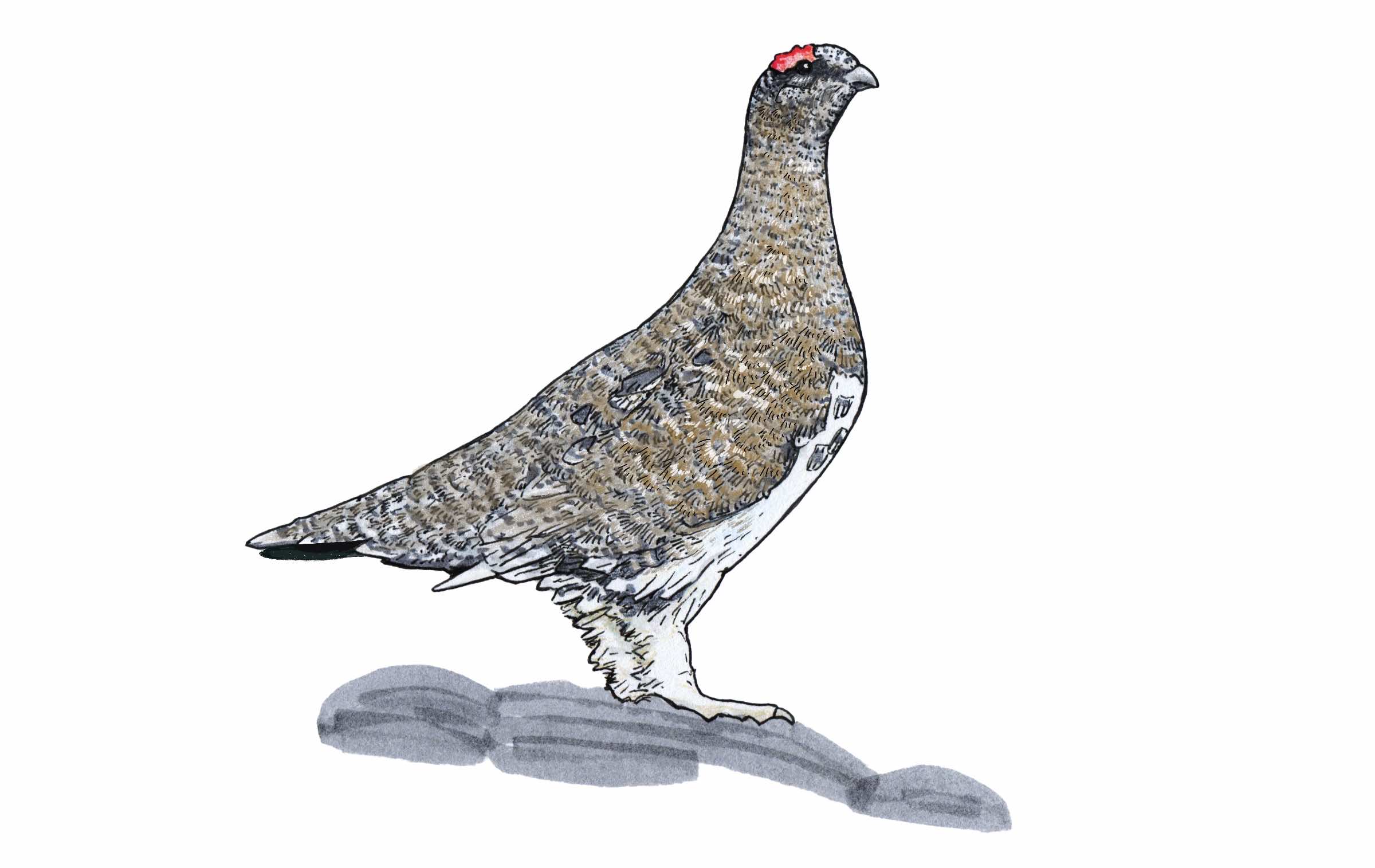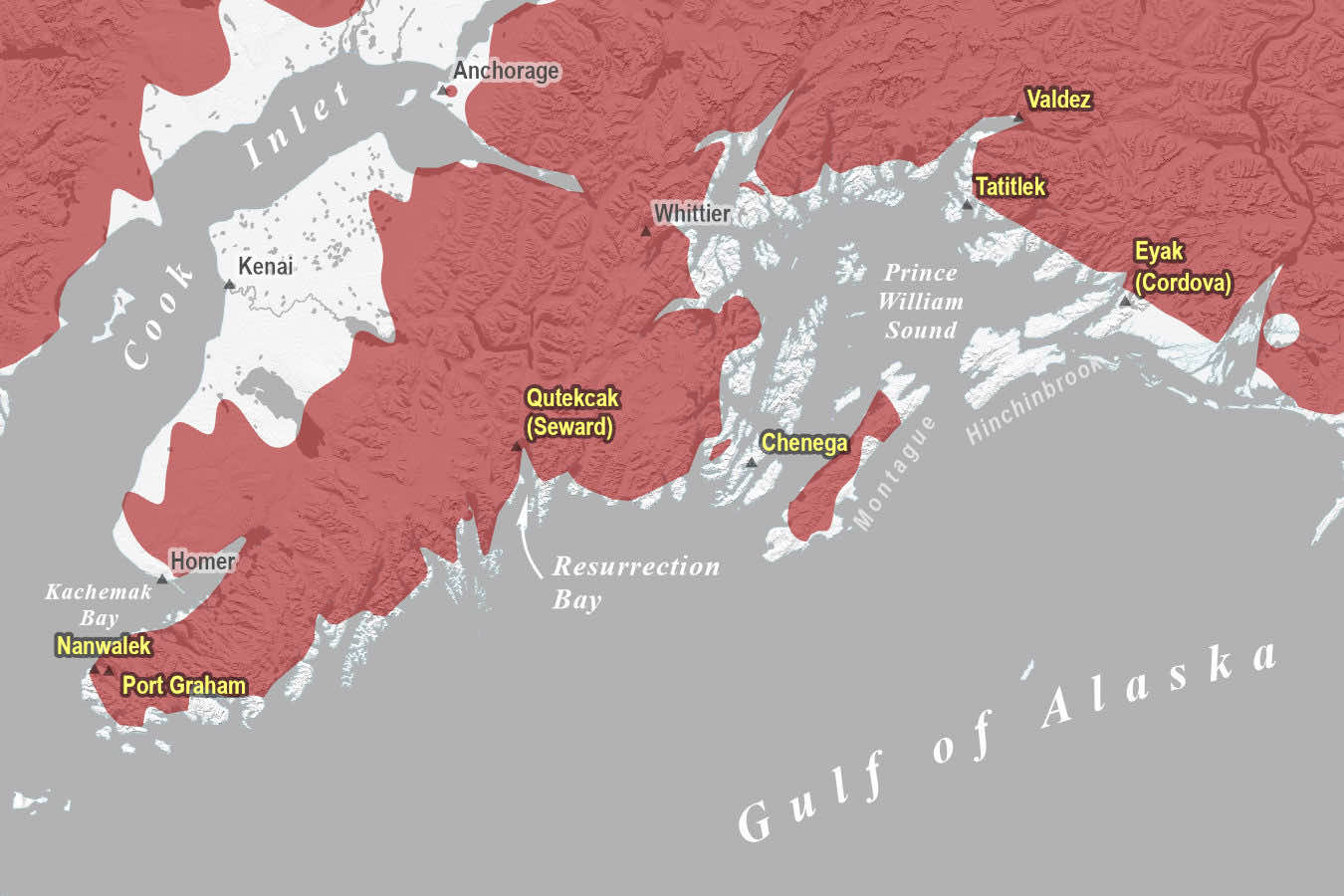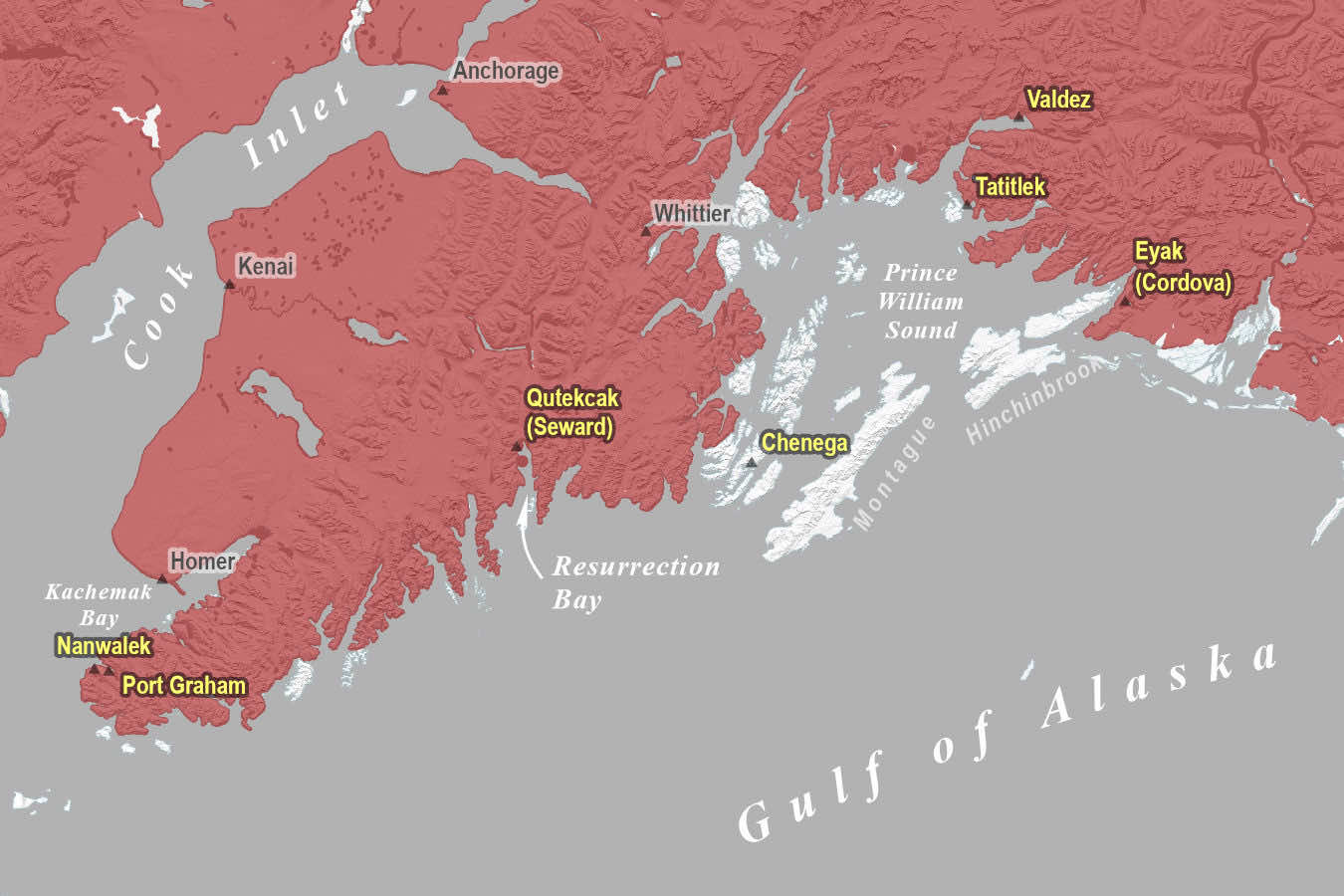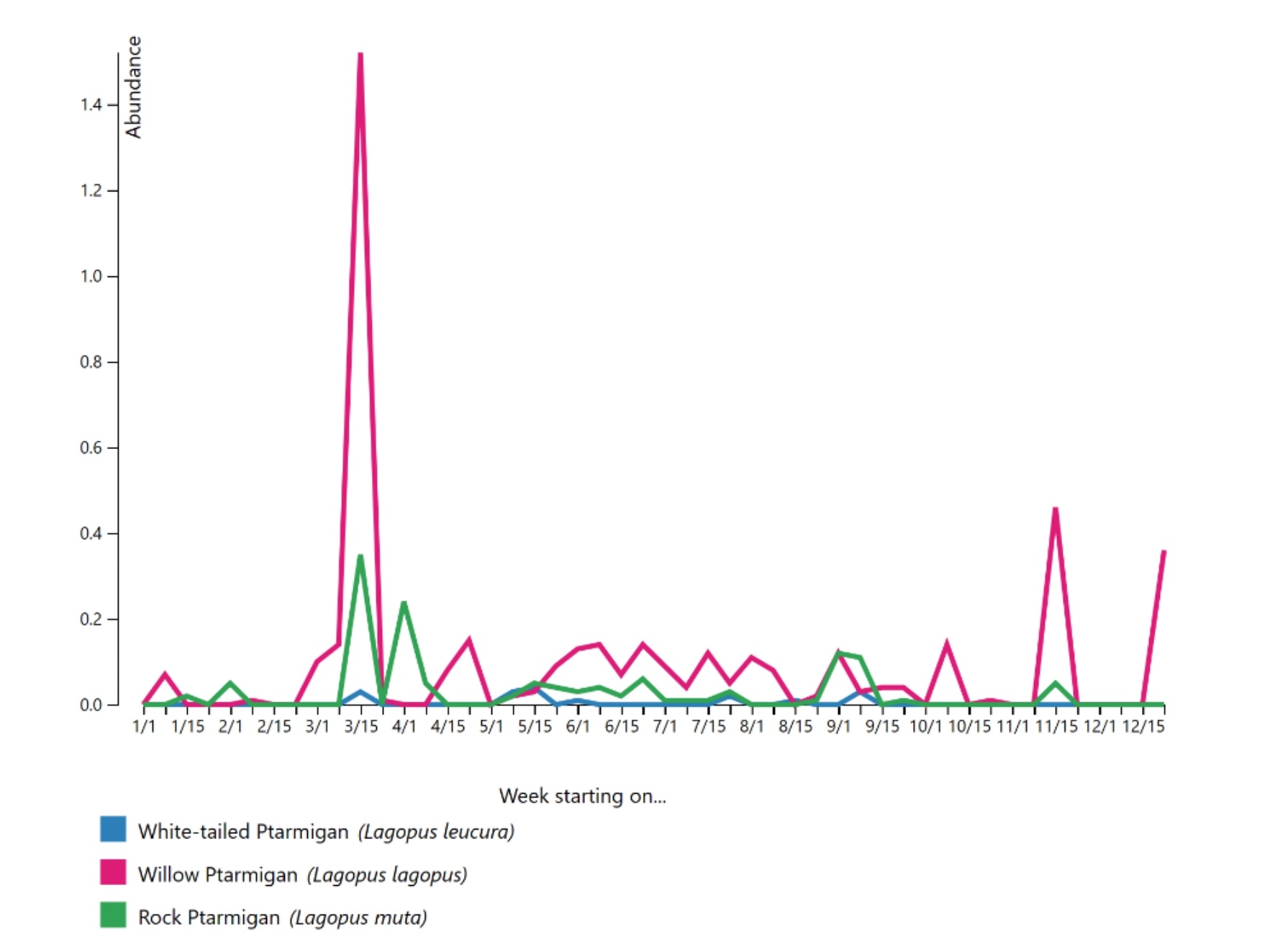Willow and Rock Ptarmigans
Lagopus lagopus, L. muta
Interested in reading the “Bird Ethnography of the Chugach Region” book?
Willow and Rock Ptarmigans
Lagopus lagopus, L. muta
qategyuk (LCI), qategyak (PWS)
Description
Willow Ptarmigan, Rock Ptarmigan, and White-tailed Ptarmigan (L. leucura) are the three ptarmigan species found in the Chugach Region. Ptarmigans are members of the grouse family but have feathered toes and are much smaller. All ptarmigans become white in the winter. However, both Willow and Rock Ptarmigan have black tails, and the male of the latter has a black line that runs from bill to eye. The Willow Ptarmigan is the largest of the three species. Willow Ptarmigan males have a white breast, legs, and wings with a reddish-brown head and dark brown speckled down their back. Females are more brow and have more barring than the male Willow Ptarmigan. Both sexes retain their white legs and black tails year-round.
Willow Ptarmigan (spring molting male)
or qategyuk (LCI) or qategyak (PWS)
Illustration by Kim McNett
Rock Ptarmigan (male)
or qategyuk (LCI) or qategyak (PWS)
Illustration by Kim McNett
Habitat and Status
The Willow Ptarmigan is locally a common resident along mainland portions of the Chugach Region. During the summer, Willow Ptarmigan occur most regularly in the grassy and brushy, somewhat open valleys between 1,000- and 2,500 feet elevation. ln some locations, such as College Fiord and Russell Fiord, they occur near sea level, but at others, such as at the heads of the mountain valleys, as high as 3,000 ft. The Rock Ptarmigan is a common resident of mountains in the Chugach Region. The Rock Ptarmigan appears to be common in alpine tundra between 1,000‒5,000 feet. The White-tailed Ptarmigan is an uncommon local resident of the mainland, occurring in the dry and windswept alpine areas.
Ptarmigans seem to form and disband flocks all throughout the fall as they move around. In winter, ptarmigans move nomadically from one place to another in search of temporary shelter or feeding grounds. Come early spring, thousands of ptarmigan flock back to their breeding grounds, but immediately become separated as males choose breeding territories.
Willow Ptarmigan will likely do well as the climate of the Chugach Region warms. Trees and shrubs are expected to encroach further into alpine tundra even as snow is expected to increase at higher elevations, both of which will contribute to improved conditions for this species.
Rock Ptarmigan are widely distributed throughout mainland areas of the Chugach Region.
Willow Ptarmigan are widely distributed throughout mainland areas of the Chugach Region.
Traditional Use
Only two mentions of ptarmigans were found in the ethnographic and oral history sources consulted for this project, and that mention implies that rock ptarmigans were not hunted by the Chugach. “Among land birds proper hardly any than the wood grouse [Spruce Grouse] was hunted, as the rock ptarmigan lives only near and above the timber line” (Birket-Smith 1953). However, it seems unlikely that the Chugach would not hunt all three species of ptarmigan. If they were hunting sheep or goats, which is likely, ptarmigan would almost certainly be harvested opportunistically. In fact, Akaran (1981) lists ptarmigan among the birds that the Chugach took for food.
An Alutiiq legend also suggests an association between houses, nests, and protection (Alutiiq Museum):
Once, there was an old, lame man who lived far from other people. One day he found a ptarmigan by his sod house. He treated the ptarmigan kindly and built her a nest to sleep in. The next day, the man went off hunting. When he returned, his house was warm and clean, and there was a meal and a newly made pair of boots waiting for him. This happened the second day too. In the evenings, the man treated the ptarmigan kindly, feeding and playing games with her. Eventually, the bird removed her skin to reveal a beautiful woman and she agreed to become the man’s wife. By providing the bird a safe home, the man created a happy life for himself.
In more contemporary times, eating was the main use for ptarmigan, but what wasn’t eaten was used in other ways. Popular uses for feathers include gifting them to artists to use, tying salmon flies with them, and collecting them. One elder explained that after hunting he would give the birds that were too “shot up” to people who trap. Most of the insides were used as bait, but individual feathers spinning in the wind were effective for luring American Marten. The wings were also used to train hunting dogs.
Continue Your Search Below
